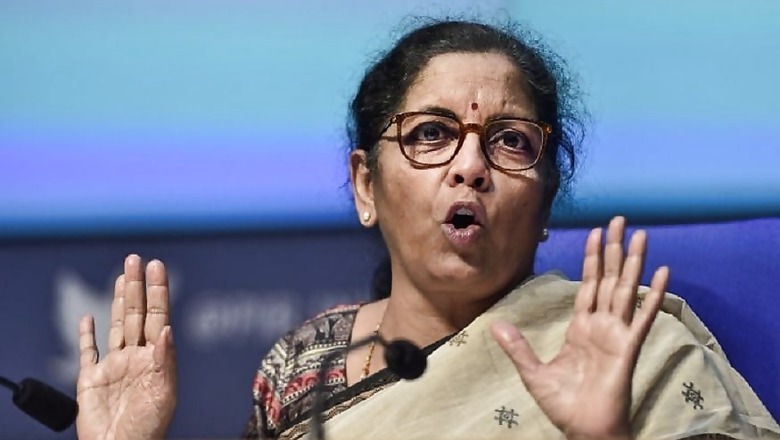
views
Nearly 5 per cent of the Rs 21 lakh crore stimulus package announced by Finance Minister Nirmala Sitharaman over five tranches to deal with the COVID-19 crisis relates to already budgeted expenditures, a report said.
Only about 10 per cent of this stimulus can be traced as direct additional budgetary cost to the central exchequer. Nearly 5 per cent of the stimulus relates to already budgeted expenditures, EY India Chief Policy Advisor D K Srivastava said.
The rest of the stimulus primarily pertains to RBI's liquidity enhancement measures, government's credit guarantee programs and insurance schemes, he said.
"In addition to the stimulus amount, a number of structural reforms have also been announced which may have a far-reaching efficiency-augmenting impact. Most of these relate to the supply side of the economy," he added.
He further said the state governments would welcome the enhancement of their borrowing limit from 3 per cent to 5 per cent of their respective GSDPs, but not many of them may avail of the entire incremental amount. This is due to the likelihood of a tangible increase in borrowing cost because of the large gap that appears to be emerging between the total public sector borrowing requirement (PSBR) and the available resources, he said.
Meanwhile, Barclays said the actual fiscal impact of the stimulus measures would be Rs 1.50 lakh crore or 0.75 per cent of the GDP.
"We estimate that the actual fiscal impact on the budget will be only Rs 1.5 lakh crore(0.75 per cent of GDP), based on our calculations and assumptions made during the series of announcements," Barclays' Chief India Economist Rahul Bajoria said.
On direct listing of companies overseas, KPMG Partner Sai Venkateshwaran said it was earlier recommended by a Sebi committee, and will now become a reality with these proposed reforms.
"In the current and post COVID-19 economic environment, many of our large and new age companies will need access to deeper pools of capital, at the right valuations and in a market with their relevant peer group," Venkateshwaran said.
Several companies that adopt new disruptive business models and are geared up for the post COVID-19 reality will see significant growth and will find this overseas listing avenue to be quite attractive, he added.
With increasing pressure on rural employment due to migrant workers moving back home, increased budgetary outlay on MNREGA was always expected, Deloitte India Partner Arindam Guha said.
However, he said, it may be required to take a careful relook at the type of projects and the commissioning institutions. For example, farm gate processing facilities being implemented by farmer producer organisations may need to be included in the list.




















Comments
0 comment